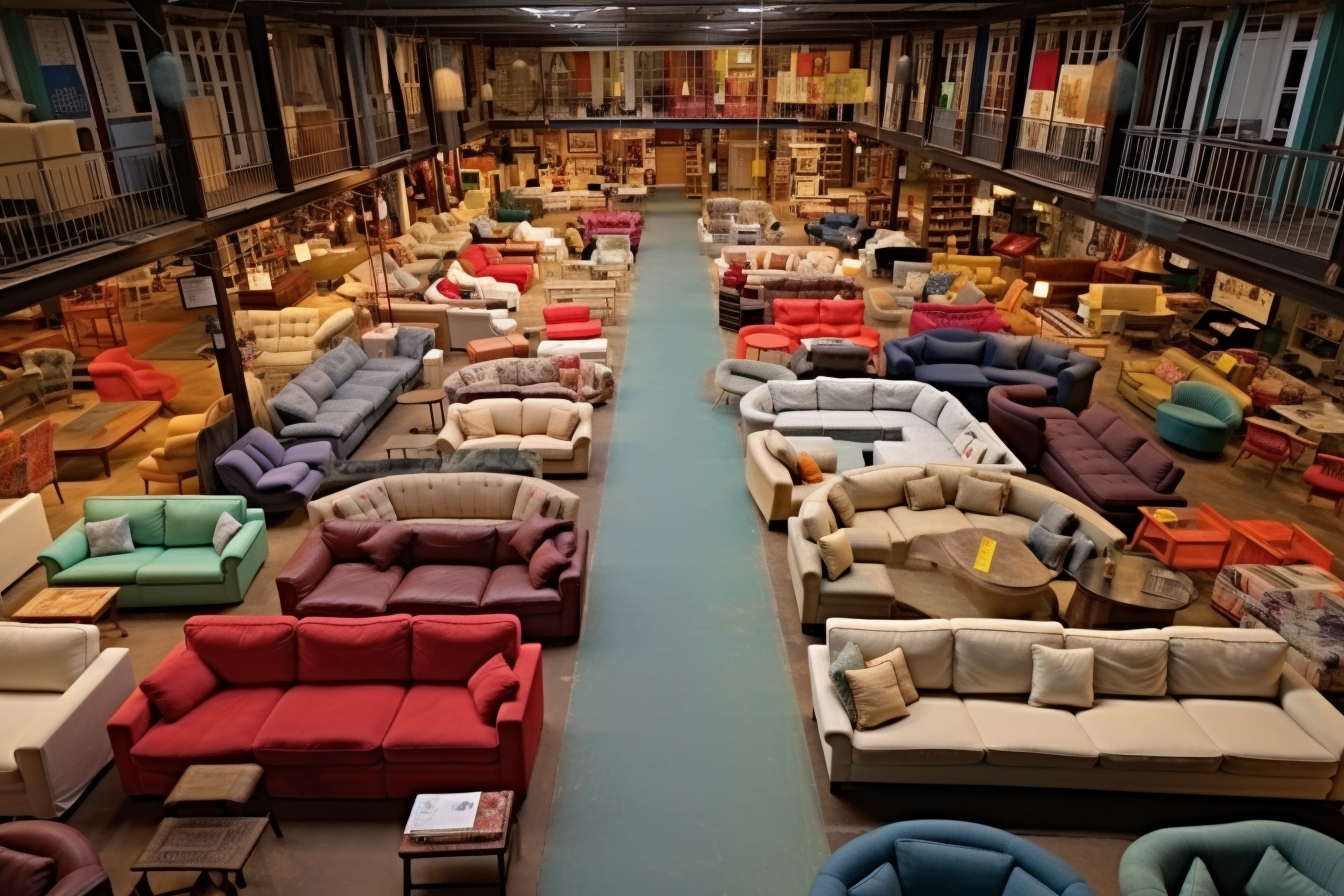Warehouse Furniture Sales: Why Last Year’s Collections Cost Less Than in Stores
When shopping for furniture, savvy consumers often discover significant price differences between retail stores and warehouse sales. These warehouse outlets offer last year's collections at markedly lower prices than their retail counterparts. This pricing disparity isn't merely a marketing strategy but stems from fundamental differences in business operations, inventory management, and overhead costs. Understanding these differences can help furniture shoppers make informed decisions and potentially save thousands of dollars on quality furniture pieces.

How Furniture Warehouses Manage Inventory Cycles
Furniture warehouses operate on a cyclical inventory management system that directly impacts pricing. Each year, manufacturers and distributors need to clear space for upcoming collections, creating a natural cycle of inventory rotation. This process involves systematically removing previous seasons’ items to accommodate new designs and styles. Furniture warehouses often clear previous collections to prepare for new inventory, offering these items at reduced prices rather than paying for extended storage. This inventory turnover is essential for maintaining profitability and ensuring fresh merchandise flows through the supply chain. Unlike retail stores that might gradually phase out older collections, warehouses typically implement more aggressive clearance strategies to quickly free up valuable storage space.
The Economics of Bulk Furniture Sales
One of the primary reasons warehouse furniture costs less is the efficiency gained through volume sales. Last season’s sofas, tables, or chairs may be sold in bulk, lowering handling and display expenses significantly. This bulk selling approach creates several cost advantages: reduced per-item handling costs, minimized storage requirements, and streamlined logistics operations. When warehouse operators can move multiple furniture pieces simultaneously, the savings on labor and processing are substantial. Additionally, the reduced time these items spend in inventory decreases carrying costs such as insurance, taxes, and depreciation. These operational efficiencies translate directly to lower price tags for consumers without necessarily indicating lower quality merchandise.
Retail Markup Factors That Increase Store Pricing
The shopping experience at furniture retail stores comes with hidden costs that consumers ultimately pay for. Retail stores usually include showroom costs and marketing, which influence pricing significantly. These expenses encompass lavish showroom designs, strategic store locations in high-rent shopping districts, extensive lighting systems to showcase furniture properly, and climate control to maintain optimal conditions. Beyond physical space costs, retailers invest heavily in visual merchandising, professional interior design services, and creating aspirational room setups that help customers visualize products in their homes. Marketing expenses further inflate retail prices, from traditional advertising campaigns to digital marketing initiatives, professional photography of furniture arrangements, and the development of glossy catalogs and promotional materials.
The Hidden Value of Last Year’s Furniture Collections
Contrary to what some might assume, previous-year furniture collections often represent exceptional value rather than outdated merchandise. Design trends in furniture evolve more gradually than in fashion or technology, making last year’s collections nearly indistinguishable from current offerings in most cases. Quality furniture is designed to remain stylish and functional for decades, not just seasons. Manufacturers typically make only incremental changes between collections, sometimes merely altering fabric options, accent details, or introducing minor structural modifications. The core design elements, craftsmanship, and materials usually remain consistent across several years of production.
Distribution Channels and Their Impact on Furniture Pricing
The path furniture takes from manufacturer to consumer significantly influences its final price. Traditional retail involves numerous intermediaries, each adding their markup. In contrast, warehouse sales often represent a more direct distribution channel. When furniture moves directly from manufacturers or distributors to warehouse outlets, several layers of markup are eliminated. This streamlined approach removes costs associated with regional distributors, sales representatives, and exclusive retailer arrangements. Additionally, warehouses typically operate with leaner staffing models compared to retail stores, which maintain teams of commission-based sales associates, interior design consultants, and customer service personnel.
Comparative Pricing: Warehouse vs. Retail Furniture
Understanding the typical price differences between warehouse and retail furniture helps consumers make informed purchasing decisions. The table below illustrates common price variations for popular furniture categories.
| Furniture Category | Average Retail Price | Average Warehouse Price | Typical Savings |
|---|---|---|---|
| Leather Sofa | $2,200 - $3,500 | $1,400 - $2,200 | 30-40% |
| Dining Table Set (6-piece) | $1,800 - $2,600 | $1,100 - $1,600 | 35-45% |
| Queen Bedroom Set | $2,500 - $4,000 | $1,600 - $2,500 | 35-40% |
| Sectional Sofa | $2,800 - $4,500 | $1,700 - $2,800 | 35-45% |
| Recliner Chair | $800 - $1,500 | $500 - $900 | 30-40% |
Prices, rates, or cost estimates mentioned in this article are based on the latest available information but may change over time. Independent research is advised before making financial decisions.
Why Timing Matters in Furniture Warehouse Shopping
Strategic timing can further enhance the cost advantages of warehouse furniture shopping. Manufacturers typically release new collections following major furniture trade shows, which usually occur twice yearly. This creates predictable clearance periods when warehouses are most motivated to sell previous inventory. Shopping during these transition phases—often in January/February and July/August—can yield even deeper discounts on last year’s collections. Additionally, end-of-quarter sales periods often coincide with warehouse inventory reduction initiatives, creating another opportunity for significant savings. Many warehouse operations also operate with seasonal considerations, particularly for outdoor furniture and holiday-specific items.
The significant price differences between warehouse and retail furniture stores reflect fundamental business model distinctions rather than quality disparities. By understanding inventory management cycles, bulk sales economics, and retail markup factors, consumers can make informed decisions that balance quality, style, and budget considerations when furnishing their spaces.




